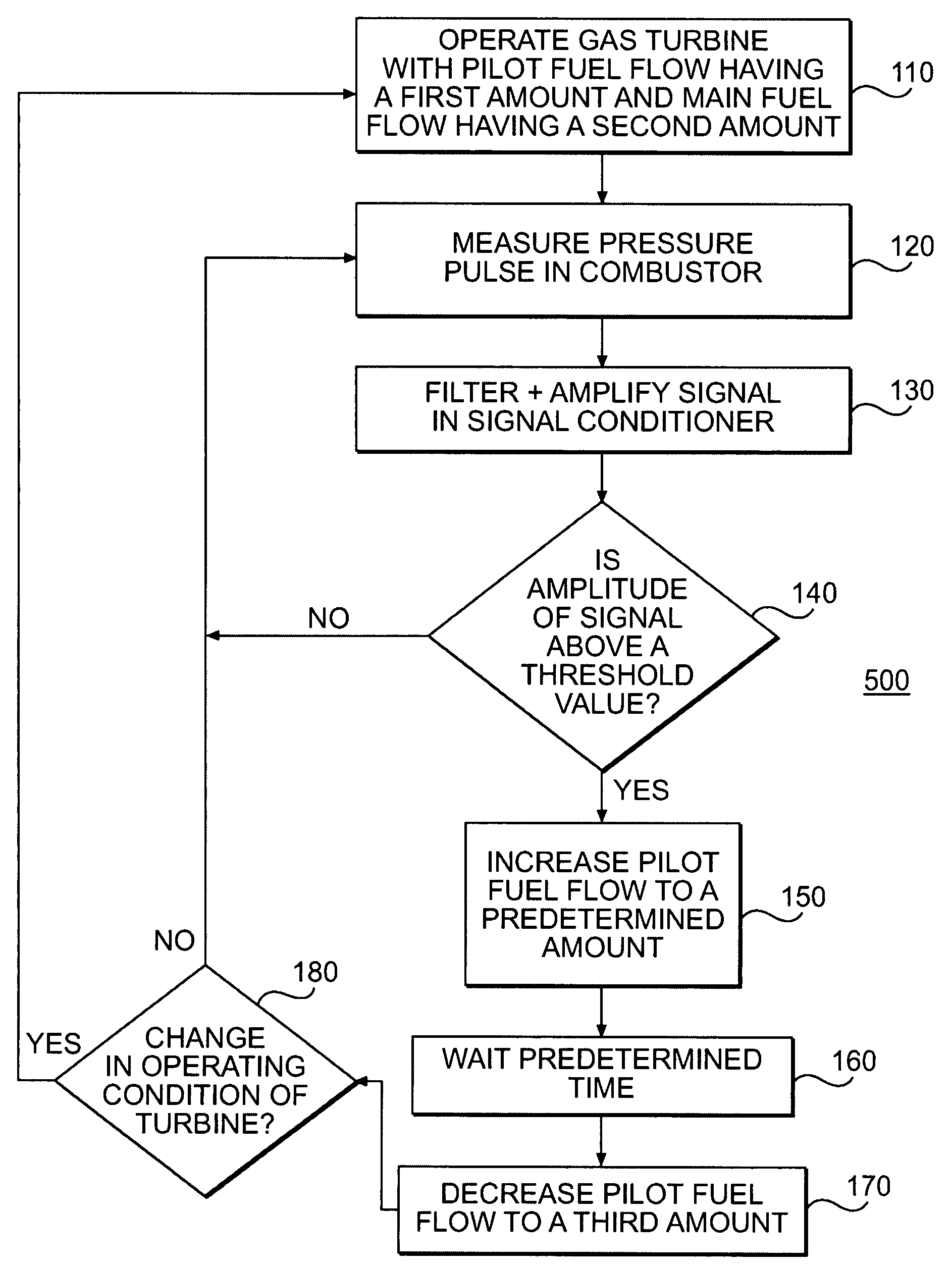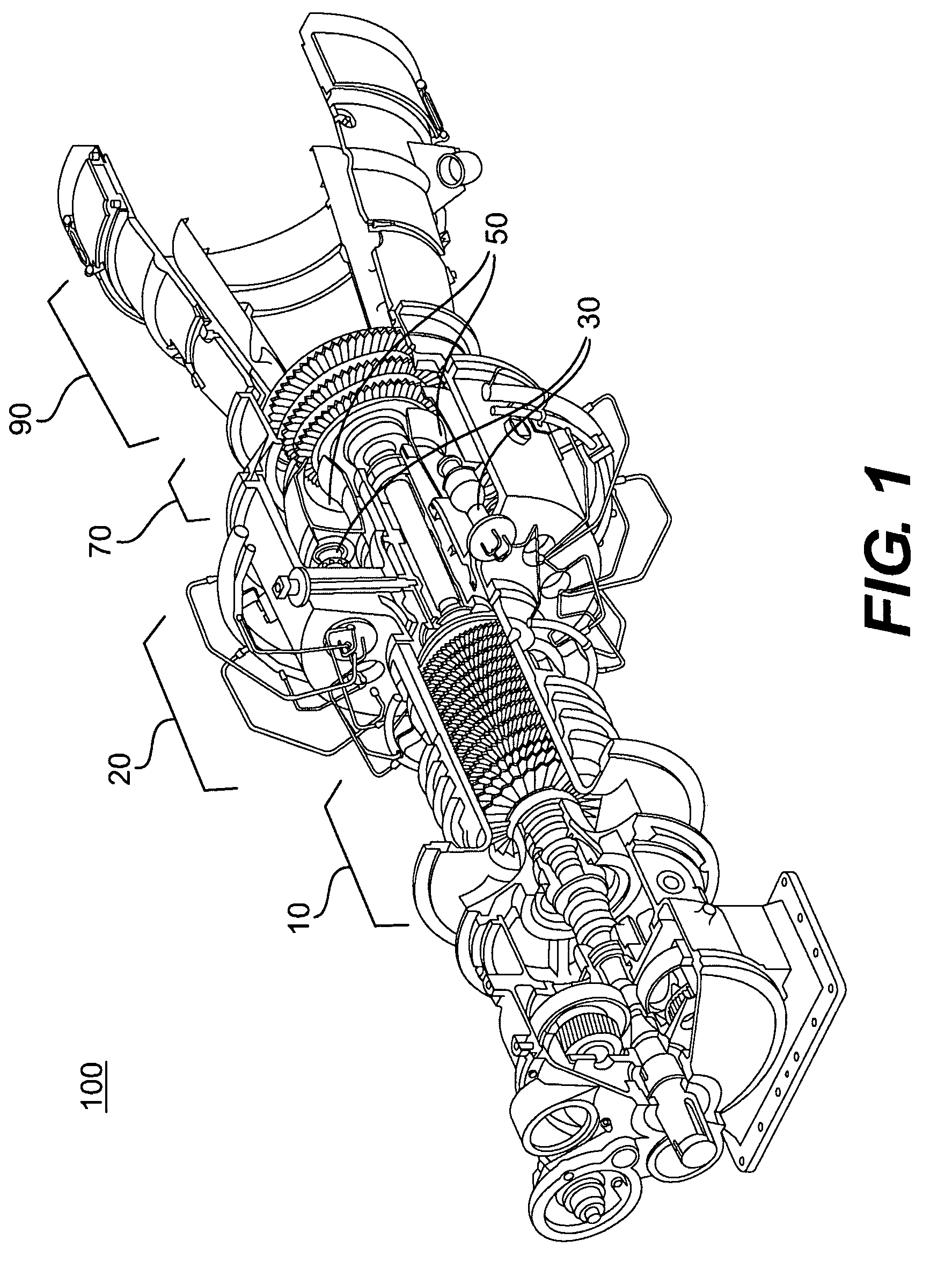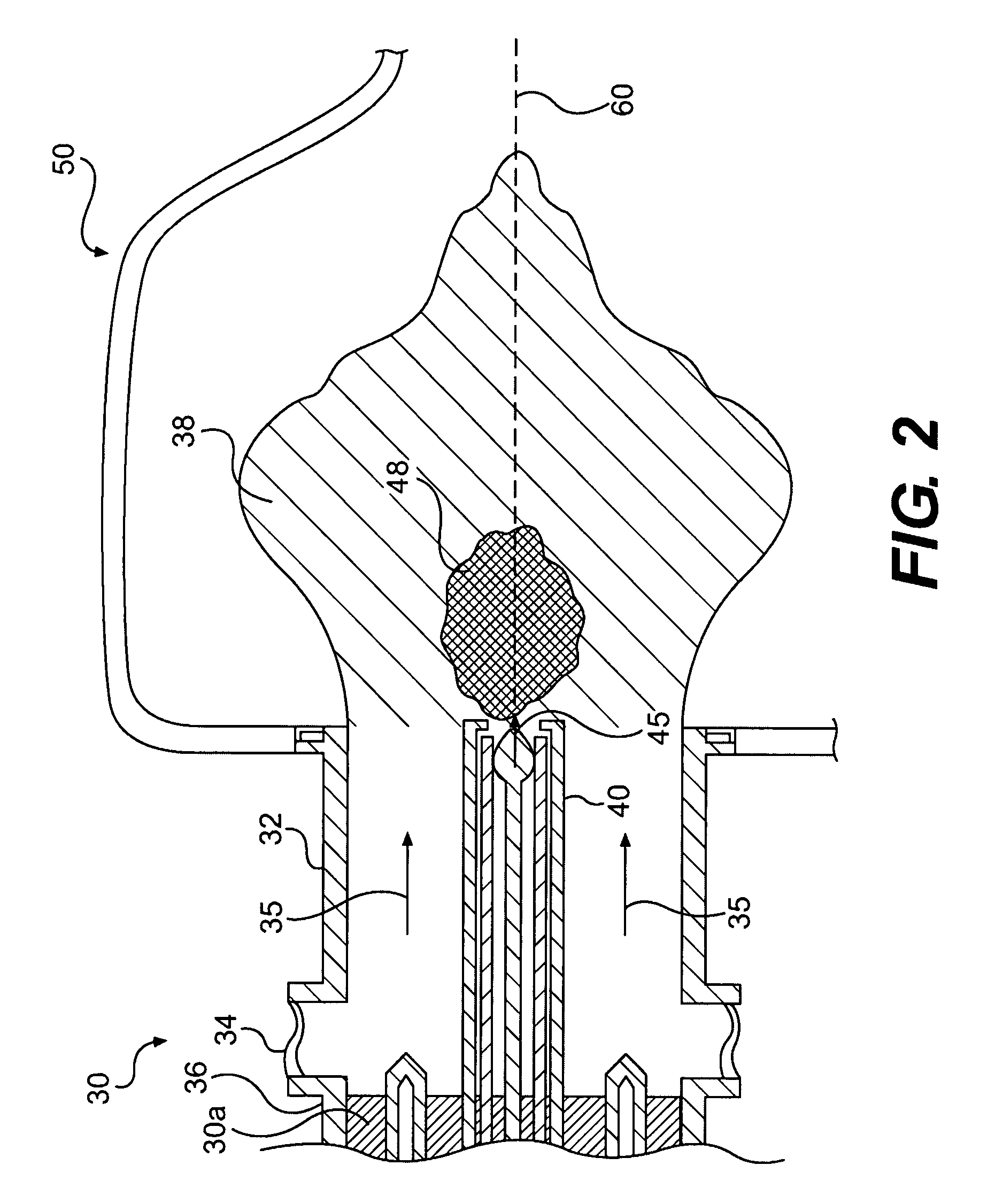Active combustion control for a turbine engine
a technology of active combustion control and turbine engine, which is applied in the ignition of turbine/propulsion engine, instruments, lighting and heating apparatus, etc., can solve the problems of mechanical damage to turbine components, unstable flame in the combustor, and development of dynamic pressure waves in the combustor, so as to reduce the amount of pilot fuel
- Summary
- Abstract
- Description
- Claims
- Application Information
AI Technical Summary
Benefits of technology
Problems solved by technology
Method used
Image
Examples
Embodiment Construction
[0012]FIG. 1 illustrates an exemplary gas turbine engine 100. Turbine engine 100 may have, among other systems, a compressor system 10, a combustor system 20, a turbine system 70, and an exhaust system 90. In general, compressor system 10 compresses incoming air to a high pressure, combustor system 20 mixes the compressed air with a fuel and burns the mixture to produces high-pressure, high-velocity gas, and turbine system 70 extracts energy from the high-pressure, high-velocity gas flowing from the combustor system 20. It should be emphasized that, in this discussion, only those aspects of turbine engine 100 useful to illustrate the combustion control process will be discussed.
[0013]Compressor system 10 may include any device capable of compressing air. This compressed air may be directed to an inlet port of combustor system 20. Combustor system 20 may include a plurality of fuel injectors 30 configured to mix the compressed air with a fuel and deliver the mixture to one or more co...
PUM
 Login to View More
Login to View More Abstract
Description
Claims
Application Information
 Login to View More
Login to View More - R&D
- Intellectual Property
- Life Sciences
- Materials
- Tech Scout
- Unparalleled Data Quality
- Higher Quality Content
- 60% Fewer Hallucinations
Browse by: Latest US Patents, China's latest patents, Technical Efficacy Thesaurus, Application Domain, Technology Topic, Popular Technical Reports.
© 2025 PatSnap. All rights reserved.Legal|Privacy policy|Modern Slavery Act Transparency Statement|Sitemap|About US| Contact US: help@patsnap.com



